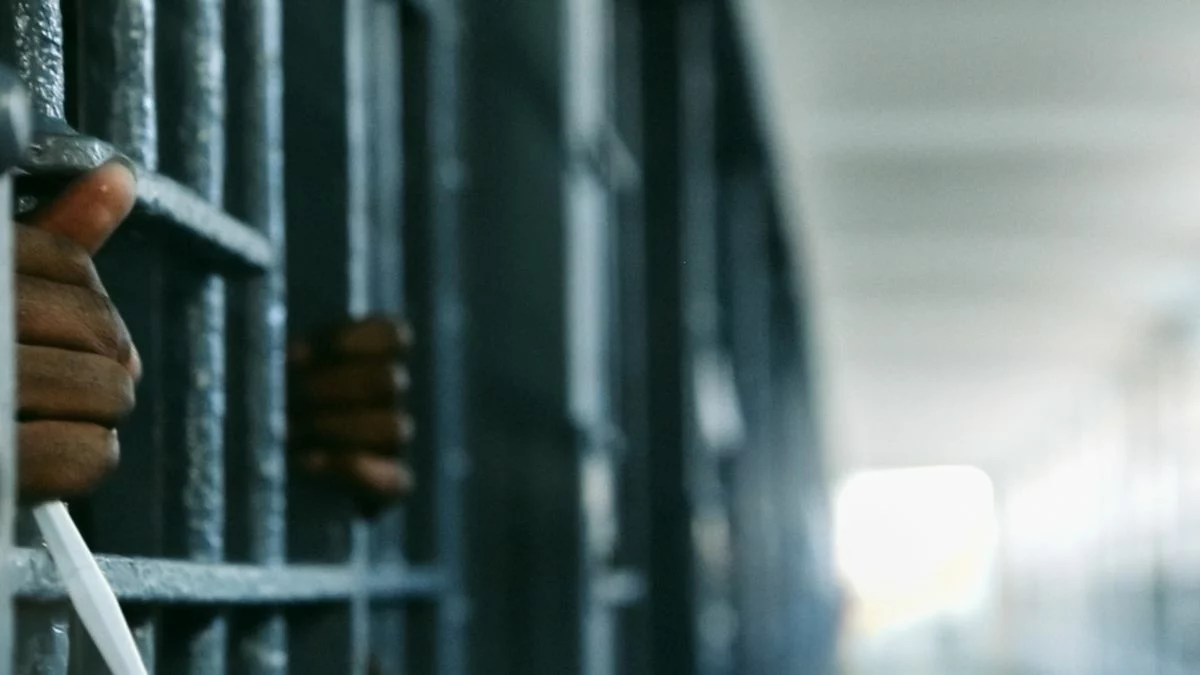Europe's Bad Nuclear Options - Independent Newspaper Nigeria
Turkish and Spanish soldiers during NATO training in Barbate, Spain, March 2025. JON NAZCA / REUTERS.
The early months of the second Trump administration have left Europe adrift. The continent was already reeling from the war in Ukraine and increasingly worried about the specter of Russian aggression. Now, new leadership in Washington is casting doubt on its commitment to the defense of European allies.
In the eyes of Europeans, even the U.S. nuclear umbrella, which for decades has shielded the continent from outside threats, no longer seems fully dependable. “I want to believe that the United States will stay by our side,” French President Emmanuel Macron said in March. “But we have to be prepared for that not to be the case.”
The way forward, Macron has argued, is to protect the continent from attack without relying on the deterrent power of American nuclear weapons. France’s contribution, he has suggested, might be to put its own nuclear arsenal in the service of its European neighbors.
It is too early to tell what will come of the French president’s offer. A similar proposal Macron made in 2020 was ignored in other European capitals. But the continent’s geopolitical predicament has grown much direr in the years since, and the probability of an attack on European NATO members is now at a level not seen since the late 1970s. Given that reality and the seeming indifference of the Trump administration to it, the continent needs to rethink its own deterrence strategies. If the American nuclear umbrella is no longer open, Europe might need one of its own. Ironically, this would run counter to U.S. President Donald Trump’s ambition, stated in 2017, to “de-nuke” the world.
The credibility of any nuclear deterrent rests on two pillars: having the right capabilities and having the resolve to use them. Judged by those criteria, neither Macron’s proposal nor any other option for an independent European nuclear deterrent currently passes muster. But even if the moment for Europe to decouple its security from that of the United States has not yet arrived, the continent’s leaders must prepare for the possibility that it may before long. And that means beginning to take serious stock of their nuclear options. In the short term, doing so will signal that Washington needs to take Europe’s deterrence concerns seriously. But it would also lay a foundation on which Europe could build should its fears of abandonment by the United States really come true.
Historically, most European countries have viewed nuclear weapons with skepticism and, in some cases, outright hostility. Antinuclear sentiment peaked in the 1980s, when NATO’s “dual track” decision, which included plans to station American intermediate-range nuclear weapons in Western Europe, set off massive protests in cities across the region. Popular opposition was fueled in part by the belief that U.S. nuclear weapons were not a deterrent against Soviet aggression, as NATO leaders argued, but a vehicle for reckless provocation and warmongering. The 1983 film The Day After offered a fictionalized preview of what might lie in store: a U.S.- Soviet confrontation in Berlin spiraling into a small-scale nuclear war and, eventually, a global nuclear wipeout. Among the record number of dystopian nuclear-themed works of science fiction to have come out of the 1980s, many played on such fears.
In reality, what followed was not Armageddon but détente. The Americans and the Soviets agreed to limit their arsenals, and those agreements held after the Soviet Union fell and Russia took its place. As the Cold War receded into history, fears of nuclear war abated.
But in European policymaking circles, resistance to the logic of nuclear deterrence persisted. Outside Europe’s two nuclear powers, France and the United Kingdom, European officials and thinkers still tend to associate all things nuclear with destruction more than with deterrence.
Even so, the war in Ukraine has brought the nuclear issue back into focus, mainly in light of a renewed and growing nuclear threat from Russia. Part of the problem is the sheer size and potency of Russia’s arsenal of around 5,580 nuclear warheads. It is unclear how many of those warheads are meant to target central or western Europe. But the dozens of nuclear warheads Russia has stationed in Belarus are cause for concern, as they could easily strike NATO countries such as Latvia, Lithuania, and Poland.
More worrying than the arsenal itself, however, is Russia’s potential willingness to use it, including as a means of coercion and blackmail. Russian President Vladimir Putin’s repeated nuclear threats against Ukraine and its European supporters portend trouble for the rest of the continent, particularly in conjunction with the ongoing reorganization and modernization of Russia’s armed forces. Russia appears to be reorienting its military capabilities and strategy toward the possibility of protracted conflict with Europe. It also aims to increase active military personnel from 1.3 million to 1.5 million by 2027, raising the possibility of a return to Soviet-style mass mobilization.
Even as the geopolitical danger from the East has increased, the protection afforded by the American nuclear umbrella no longer seems guaranteed, at least not since Trump took office for the second time in January. Of course the United States still has the ability to provide Europe with a credible nuclear deterrent. What is increasingly uncertain is whether, under Trump, it still wants to do so. Trump and those around him have repeatedly suggested that the United States might not come to its allies’ rescue if they were attacked, musing about pulling U.S. troops out of Europe and implying that Washington might not defend NATO members that do not spend sufficiently on their own defense.
To be sure, such rhetoric may just be an attempt to pressure European allies into higher defense spending. To actually push those allies out from underneath the American nuclear umbrella would undermine the United States’ status as a superpower, alienate some of the most important partners in its geopolitical competition with China and Russia, reduce its leverage over Europe, and perhaps open the door to nuclear proliferation on the continent. But security experts could find themselves in a similar position to that of economists: despite near-total expert consensus that tariffs will spark a trade war and hurt the U.S. economy, Trump plowed ahead. In the economic realm, such missteps are harmful. In the domain of national security, the ramifications could be existential.
As the former U.S. diplomat and political scientist Ivo Daalder wrote in Foreign Affairs earlier this year, the principle of collective defense enshrined in NATO’s founding treaty “derives its credibility less from the formal treaty than from a belief among the members that they are all prepared to come to one another’s defense.” Potential aggressors must believe the same thing. Europe’s entire post–Cold War security architecture rests on this belief. To throw it into doubt risks undermining the entire system from within and without.
So far, European debates on how to establish deterrence without U.S. assistance have centered on conventional, nonnuclear military capabilities, and understandably so. The limited conventional military capabilities of European NATO members could tempt Russia into carrying out a limited attack—seizing a small piece of territory from one of its Baltic neighbors, say, or engaging a European military vessel—with the expectation that it would not suffer any serious consequences. If such an attack took place and Europe lacked the means for an appropriate military response, NATO’s credibility would be shattered. Recognizing that danger, most European countries have pledged significant increases in defense spending. It will likely take several years for those investments to fill the gaps, but at least the necessary political decisions have been made and there is broad public support for them.
A potential European nuclear deterrent is a different matter. European politicians have sporadically expressed concern about the nuclear threat from Russia, and defense experts have begun discussing Europe’s nuclear options more seriously. What is lacking, however, is an informed public debate, despite Macron’s recent proposal.
The conditions for such a debate are better than they have been in years. Before Russia’s full-scale invasion of Ukraine in 2022, polling indicated that in four European countries that hosted U.S. nuclear weapons—Belgium, Germany, Italy, and the Netherlands—a plurality of respondents opposed such hosting arrangements. By contrast, in a March poll of nine European countries, 61 percent of respondents said they would welcome a French nuclear umbrella covering the entire continent.
An extended nuclear deterrent of this type, provided by France but ideally also supplemented by the United Kingdom, would certainly merit closer scrutiny if the United States further diluted or even disavowed its security guarantees. Two other options, which seem less pertinent because they are even more controversial, also deserve attention. One is a collective nuclear deterrent: that is, an arsenal that would be controlled by a pan-European institution. The other is the acquisition of nuclear weapons by additional European states. If Europe chose any of these paths, it would need to meet two criteria to make its nuclear deterrent credible. First, its arsenal would have to be sufficiently large, technically sophisticated, and capable of surviving a first strike. Second, whoever controlled the arsenal would have to demonstrate a willingness to use it.
Of the three options, only one has been seriously discussed so far: an extended nuclear deterrent provided primarily by France, with complementary support from the United Kingdom. The new German chancellor, Friedrich Merz, has indicated interest in such an arrangement, even if he has said it would serve only to supplement American nuclear guarantees, not to replace them. And in May, France and Poland signed a treaty to deepen their security ties, a step that Polish Prime Minister Donald Tusk described as a step toward a potential French nuclear umbrella for his country.
As of today, however, French and British nuclear capabilities raise serious credibility concerns. Some 290 French nuclear warheads are ready for deployment; the United Kingdom can provide another 225. Taken together, that is a mere ten percent of what Russia can field.
Deterrence is no simple numbers game, but a gap this wide is a clear liability, for reasons of both objective and perceived weakness. For one thing, it effectively restricts European allies to what nuclear experts call “deterrence by punishment.” Such deterrence rests on the threat of overwhelming retaliation—attack us, and we will respond by laying waste to your cities. For that threat to work, one’s own nuclear assets must be able to survive the enemy’s initial attack. France certainly has that capability, since most of its warheads are deployed on submarines, which are notoriously hard to detect and destroy. But what if the aggressor used low-yield tactical weapons, and what if the target lay on the far edges of the Franco-British nuclear umbrella? Would France and the United Kingdom, which lack tactical nuclear warheads of their own, be willing to use their high-yield strategic arsenal in response—and risk total annihilation if the enemy responded in kind?
Continues in FOREIGN AFFAIRS (https:// www.foreignaffairs.com), June 24, 2025.
You Might Be Interested In







